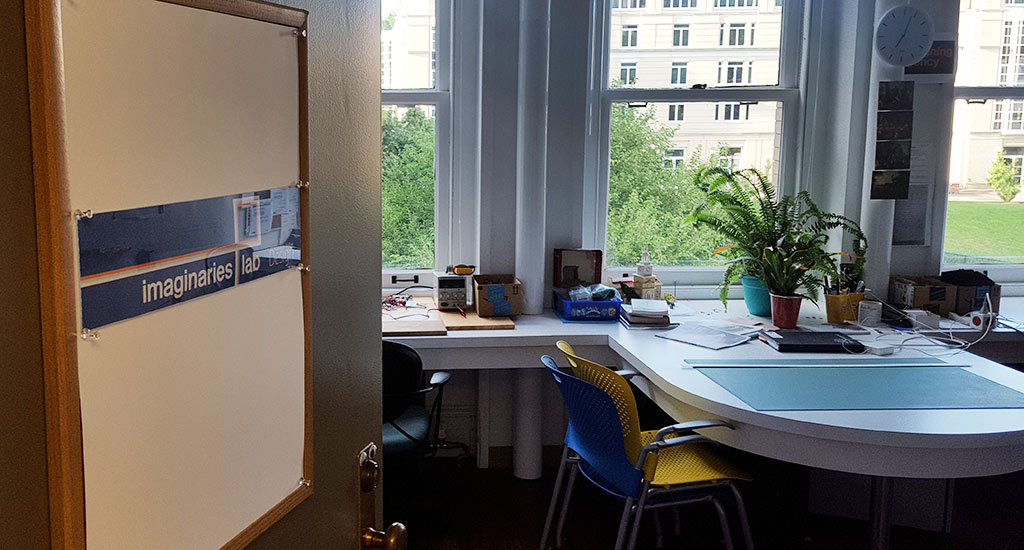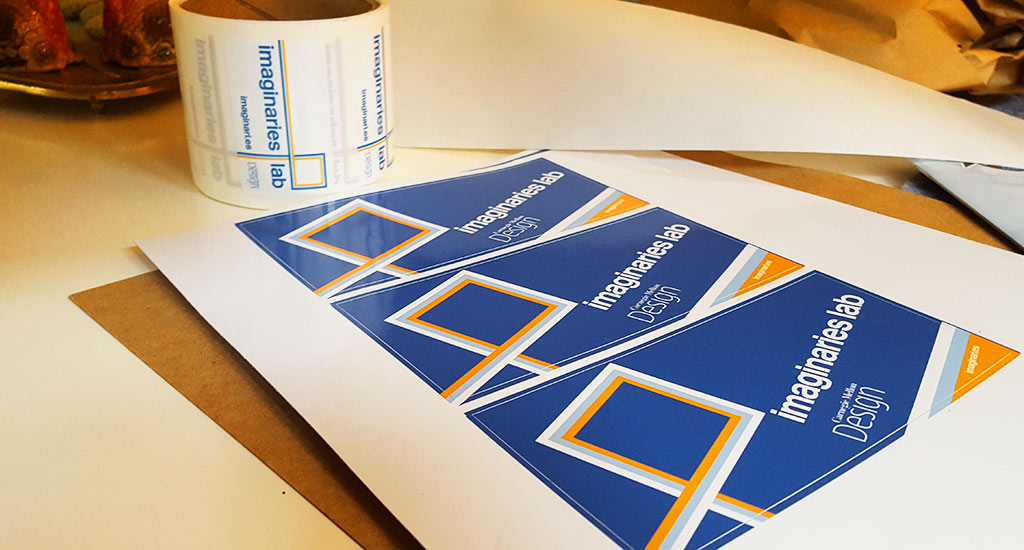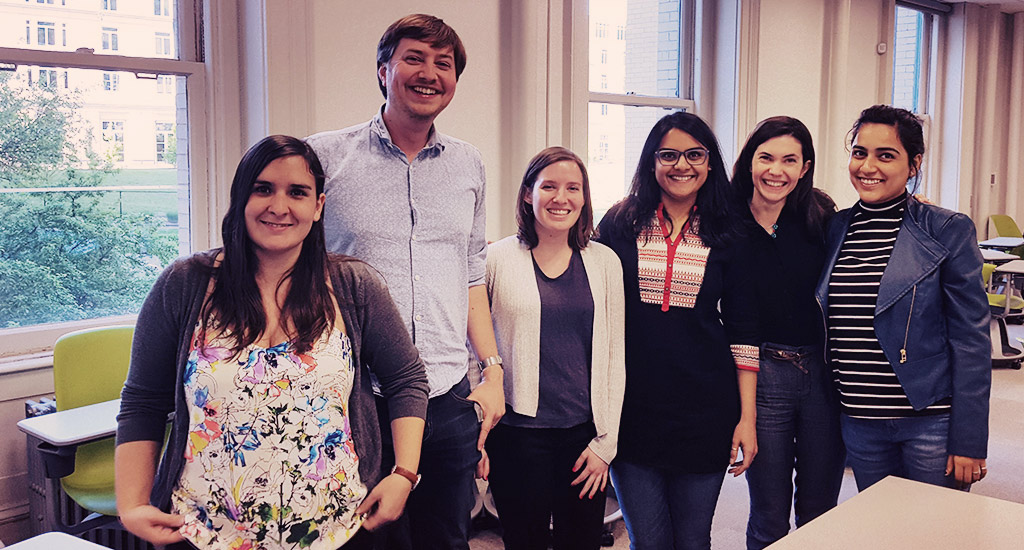“If men define situations as real, they are real in their consequences”
William Thomas and Dorothy Swaine Thomas, 1928 — later named as the ‘Thomas Theorem’

The events of the last couple of years, from Brexit to Trump, have been a vivid demonstration for our time of the power of the imaginary to affect human affairs. Not for the first time, of course — but amplified in an unprecedented way by algorithms, bots, targeting, and strategic use of personal data via social media — huge decisions are being influenced by imagined versions of what ‘reality’ is.
We cannot avoid trying to work out how to make sense of terms such as alternative facts, fake news, and post-truth as being part of everyday discourse, and incorporating them and their effects into our own models of how the world works. As Maciej Ceglowski says, people “will happily construct alternative realities for themselves, and adjust them as necessary to fit the changing facts,” and this is greatly aided by the technological infrastructures being employed by those who want to control public opinion. The powerful are, as always, those who can create the simplest, easiest to spread, most superficially persuasive images, myths, conceptions, metaphors, frames, cause-and-effect pairings, and indeed stories, in the public mind. We shouldn’t be surprised: it’s not like it hasn’t happened before, in other eras, using different means, and we all know the outcomes of that. Fictions are political, and they matter.
Shared fictions as central to society
If I were better informed by sociological theory, I could make more insightful points here about Arjun Appadurai’s consideration of “the imagination as a social practice… a form of negotiation between sites of agency (‘individuals’) and globally determined fields of possibility”, or about the concept of imaginaries in a sociotechnical sense — the specific concept developed by Sheila Jasanoff, Sang-Hyun Kim, and others around the ways in which certain dominant ‘shared’ visions of societal futures centred around certain types of (technological) progress have effects on what happens in the present — “representations of how the world works — as well as how it should work”. It’s arguable that understanding our shared (or not) visions of what climate change, or artificial intelligence, or immigration, or identity, or law, or ‘sovereignty’, or even countries themselves, are, are all important in understanding our current situation and trajectory, but also that historically, these have had potentially vital roles in the ways in which human civilisations and societies developed. Yuval Noah Harari suggests that “Any large-scale human cooperation — whether a modern state, a medieval church, an ancient city or an archaic tribe — is rooted in common myths that exist only in people’s collective imagination”, and that this is partly due to the emergence of the ability to describe the imaginary in language, to “transmit information about things that do not exist at all… entities that [people] have never seen, touched or smelled.”
“We risk being the first people in history to have been able to make their illusions so vivid, so persuasive, so ‘realistic’ that they can live in them.”
Daniel J. Boorstin, The Image: A Guide to Pseudo-Events in America, 1962.
Design and imaginaries
The idea of design (and art more broadly) as being a different form of language which can also describe the fictional or imaginary, making it real enough to be addressable, to be considered and critiqued and reflected on, is interesting. Design has the power to make visible and tangible imagined ‘better‘ (or worse) situations, to design artefacts as ‘tokens of better ages’, to apply ideas of utopia as a method, and to inspire and open up vistas – if not always actual maps — towards different futures, through speculation and design fiction. What do designers do, if not, in some sense, give us experiential pockets of imaginaries — both our own, reflected back at us, and visions of different futures, fictional at present? I find Clive Dilnot’s notion of design simultaneously stating “This!” and asking “This?” to be quite a clear way of thinking about this, because the ‘This?’ implicitly allows for speculation which is critical, which we may interpret as warnings or at least provocations to think further about what consequences might be of the proposition in question. By making our own imaginaries (more) visible, and doing the same for others’, whether new or old, design can be a translator between minds and ideas and the world. This is where I see that design essentially makes fictions matter (dual meaning intended).
“Dreams are true while they last, and do we not live in dreams?”
Tennyson, The Higher Pantheism, 1867
There can be a self-fulfilling nature to imaginaries, as the Thomas Theorem implies. If we believe something to be real, and act as if it is real, and build institutions and infrastructures around that ‘reality’, the effect may be the same as if it had been real in the first place. Fictions become fact. For example, Stephen Metcalf discusses the self-fulfillingness of imagining society as a market: “The more closely the world can be made to resemble an ideal market governed only by perfect competition, the more law-like and “scientific” human behaviour, in the aggregate, becomes.” In a design context, the idea of a kind of circular causality in which designers’ imaginaries (models, or even stereotypes, we might say), of people’s lives end up being designed into systems which then effectively make those imaginaries real is not uncommon (I looked briefly at this kind of effect in this piece for the recent Science Gallery Dublin staging of Design and Violence.) There’s something here close to Anne-Marie Willis’s idea of ontological designing, or various formulations of the “We shape our X, and then our X shape us” idea by Churchill/McLuhan/Bill Mitchell and others — we shape our imaginaries, and then, through acting on them, designing systems around them, designing systems as if they were real, they shape our actions.
Understanding understanding
In design, human-computer interaction, and human factors research, both academic and applied, we often investigate the mental models people have, or appear to have, when they are using a piece of technology, or a system. We try to find out how they think something works, or how they expect it to work, from driverless cars to government, to heating systems, to website structure, and, learning from those insights, try to (re)design those systems, or at least interfaces to those systems. The redesigns either try to match better how people think something works, or — more rarely but more interestingly — change those models.
“When we don’t know how a thing works, we make it up”.
“We can only trust something if we think we know how it works”.
Louise Downe, Chicken Shops, Platforms and Chaos, 2013 (now Head of Design for the UK Government).
Most of the research I’ve done over the last ten years, which started in questions of how people’s behaviour is influenced by the design of the products, services, and environments they use, has moved towards something much more around using design methods to understand people’s situations, the social and environmental contexts in which people live and make decisions, how they are thinking about what they’re doing and the world more widely, and what agency they have to change things. Understanding understanding (or at least trying to) — investigating how people imagine and make sense of the world — seems as though it ought to be central to any form of design research which claims to be human-centred, and the generative, or future-facing complement is enabling people to have new understandings, new imaginaries. If you’ve followed any of my more recent work, it’s been a kind of patchy way of gradually — driven by the opportunities afforded by different funded projects and teaching needs — addressing some of these questions of current and new imaginaries, from investigating mental imagery and new kinds of display for energy, to forms of design fiction as a way of enabling students to explore consequences and ambiguity, re-imagine what interactions with AI could be, and materialise invisible phenomena.
“The future is not empty. The future is loaded with fantasies, aspirations and fears, with persuasive visions of the future that shape our cultural imaginaries.”
Ramia Mazé, ‘Forms and Politics of Design Futures‘, 2014
What the Imaginaries Lab aims to do
Part of my reason for joining Carnegie Mellon a year ago was the opportunity to build a research (and teaching) platform which explores exactly these kinds of ideas in a more structured way, through a design lens. The Imaginaries Lab is small, and so far internally funded at Carnegie Mellon, but since the start of 2017, a team of graduate research assistants and I have been looking at people’s imaginaries of local government in Pittsburgh (and their agency in relation to it), ways of externalising mental imagery through landscape metaphors, and approaches to new kinds of qualitative interface. We had a ‘soft launch’ in May, during Carnegie Mellon’s Design Week, and in the coming year will be expanding and continuing these projects and developing new collaborations and directions. One of these already announced is Electric Acoustic, a situated energy sonification installation funded by the Carnegie Mellon College of Fine Arts, but there are also some other interesting ideas in the pipeline.
So, what’s the vision for the Lab? I see us concentrating on two big (linked) challenges: New ways to understand, and New ways to live. In both cases, we’ll be creating tools to support people’s imagining, both what they already imagine (which is still important), but also helping people imagine in new ways. What starts as fiction can become real, explorable, experiential. We will be creating new fictions, but also creating tools to help people understand and deconstruct the fictions that are already having an effect on them. The Lab’s work cannot help but be political: questions of understanding and futures are inextricable from questions of worldview, belief in how the world is and how it should be.
New ways to understand encompasses ideas such as creating new metaphors (to use Mary Catherine Bateson’s term), new kinds of interface, new ways of explaining and visualising systems and the relationships between ideas, and using design methods to help people have agency to use these new ways of understanding. This builds on projects such as Powerchord, Drawing Energy, Qualitative Interfaces, Mental Landscapes, Materialising the Invisible, and aspects of Civic Visions, taking some of these ideas in new directions and finishing or consolidating some of the work we have already done. One particular domain that seems especially worth exploring from a design point of view is imaginaries around artificial intelligence and automation — to offer some ethical perspectives that could help designers working in the field, but also to “develop alternative narratives to technological futures” in Dunne & Raby’s words. More widely, new ways to understand could have a substantially activist stance, helping counter the intentional fictions of the post-truth world and giving people agency to challenge and change things, in their communities and beyond.
New ways to live is more explicitly about linking imaginaries to everyday life (and indeed changes in practices and behaviours) through prototyping new ways of living — and helping people imagine new ways of living, both at a household and societal level (thus linking more explicitly to the ‘sociotechnical imaginaries’ notion in sociology as discussed earlier). What is it like to live in a different way, with different premises to your everyday routines? How can design fictions that you can actually use (or live ‘in’), together with new tools for understanding the world, affect what you do? This builds on the work I did around living labs and design for behaviour change, intersecting with some of the ideas in Carnegie Mellon’s transition design research area, and learning from the experiential futures work of futurists such as my new Carnegie Mellon colleague Stuart Candy. ‘New ways to live’ is going to involve some bigger kinds of projects, with more ambitious goals.
As a Lab, we will grow slowly — I don’t want to be spending the entirety of my time looking for funding for the next project — but one of the things that excites me about doing this is that it is, in itself, an exploration of the power of imaginaries. Putting the lab’s name on the office door and in my email signature, and treating it as a real thing within the university and externally, has made it a real thing, in a way which was refreshingly simple. It’s not now a fiction, but once upon a time, it was — as with every other design project and every other human endeavour. We can bring different worlds into being.




Parts of this article are based on talks I have given this year at Cornell University (the Hillier Lecture) and at the Universidad del Desarrollo in Santiago.
I’d like to thank Delanie Ricketts, Theora Kvitka, and Nehal Vora for their work with the Lab on its first few projects and wish them the best of luck in their new careers, thank Sarah Foley for her summer research work on service fictions, welcome back Ashlesha Dhotey and Silvia Mata-Marin, and also welcome our new research assistants joining this fall, Devika Singh, Matt Prindible, and Shengzhi Wu. Thanks too to Sebastian Deterding for putting me on to the Thomas Theorem, which expresses succinctly something that otherwise would have led to a rambling explanation on my part, and to Cameron Tonkinwise and Peter Scupelli for encouraging me to put the name on the door.